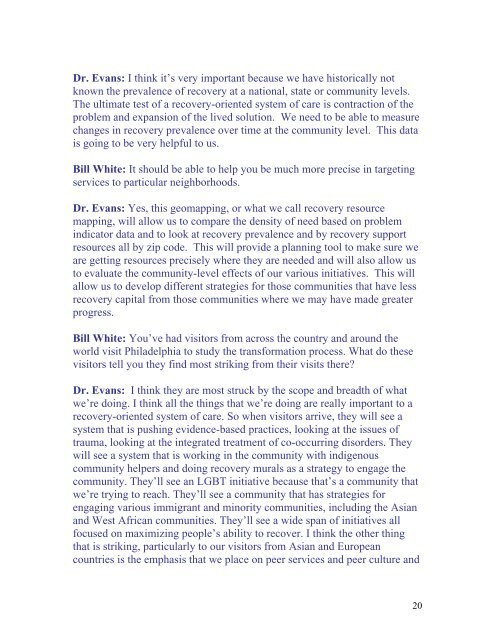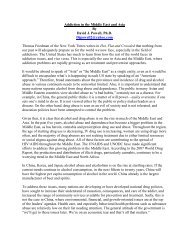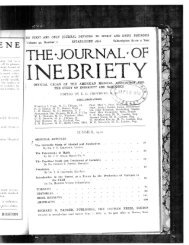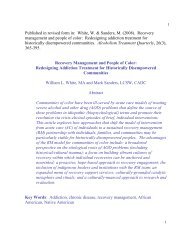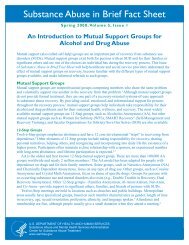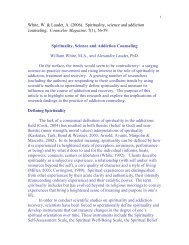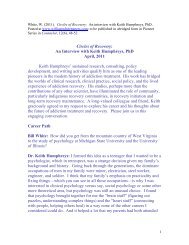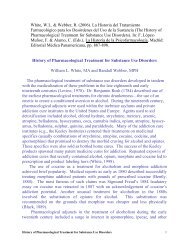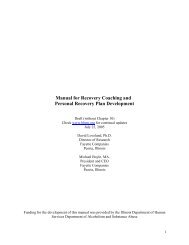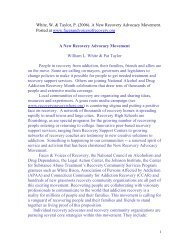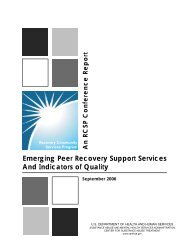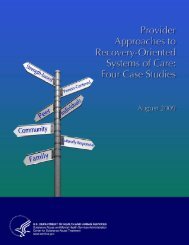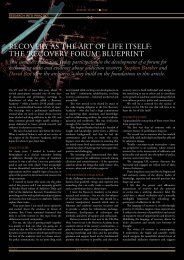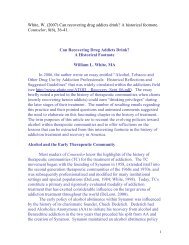An Interview with Arthur C. Evans, Jr., PhD Dr. Arthu - William L. White
An Interview with Arthur C. Evans, Jr., PhD Dr. Arthu - William L. White
An Interview with Arthur C. Evans, Jr., PhD Dr. Arthu - William L. White
- No tags were found...
You also want an ePaper? Increase the reach of your titles
YUMPU automatically turns print PDFs into web optimized ePapers that Google loves.
<strong>Dr</strong>. <strong>Evans</strong>: I think it’s very important because we have historically notknown the prevalence of recovery at a national, state or community levels.The ultimate test of a recovery-oriented system of care is contraction of theproblem and expansion of the lived solution. We need to be able to measurechanges in recovery prevalence over time at the community level. This datais going to be very helpful to us.Bill <strong>White</strong>: It should be able to help you be much more precise in targetingservices to particular neighborhoods.<strong>Dr</strong>. <strong>Evans</strong>: Yes, this geomapping, or what we call recovery resourcemapping, will allow us to compare the density of need based on problemindicator data and to look at recovery prevalence and by recovery supportresources all by zip code. This will provide a planning tool to make sure weare getting resources precisely where they are needed and will also allow usto evaluate the community-level effects of our various initiatives. This willallow us to develop different strategies for those communities that have lessrecovery capital from those communities where we may have made greaterprogress.Bill <strong>White</strong>: You’ve had visitors from across the country and around theworld visit Philadelphia to study the transformation process. What do thesevisitors tell you they find most striking from their visits there?<strong>Dr</strong>. <strong>Evans</strong>: I think they are most struck by the scope and breadth of whatwe’re doing. I think all the things that we’re doing are really important to arecovery-oriented system of care. So when visitors arrive, they will see asystem that is pushing evidence-based practices, looking at the issues oftrauma, looking at the integrated treatment of co-occurring disorders. Theywill see a system that is working in the community <strong>with</strong> indigenouscommunity helpers and doing recovery murals as a strategy to engage thecommunity. They’ll see an LGBT initiative because that’s a community thatwe’re trying to reach. They’ll see a community that has strategies forengaging various immigrant and minority communities, including the Asianand West African communities. They’ll see a wide span of initiatives allfocused on maximizing people’s ability to recover. I think the other thingthat is striking, particularly to our visitors from Asian and Europeancountries is the emphasis that we place on peer services and peer culture and20


